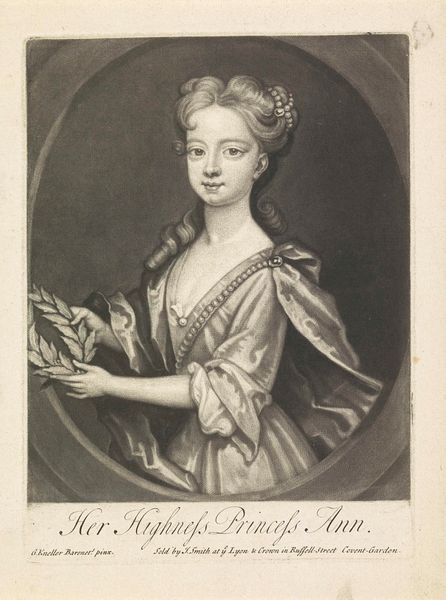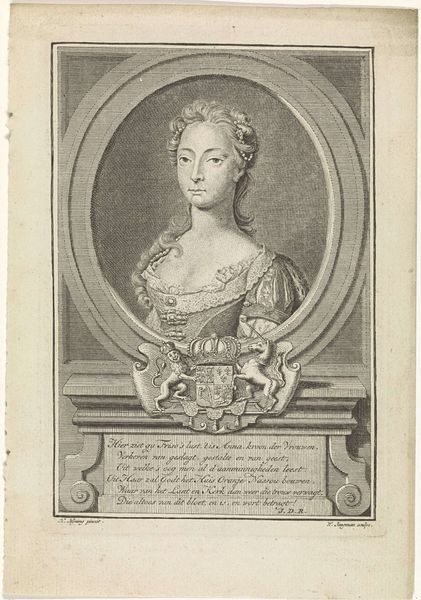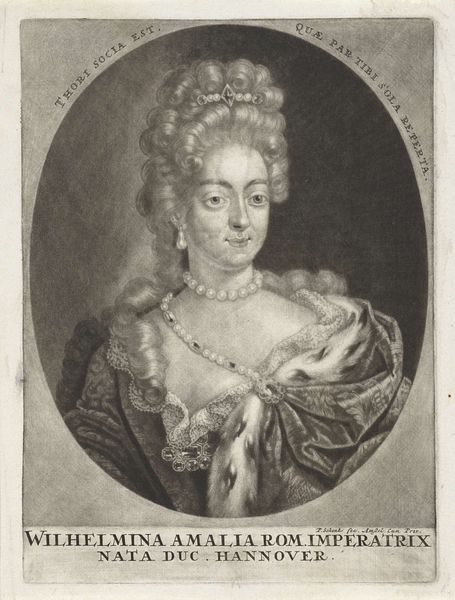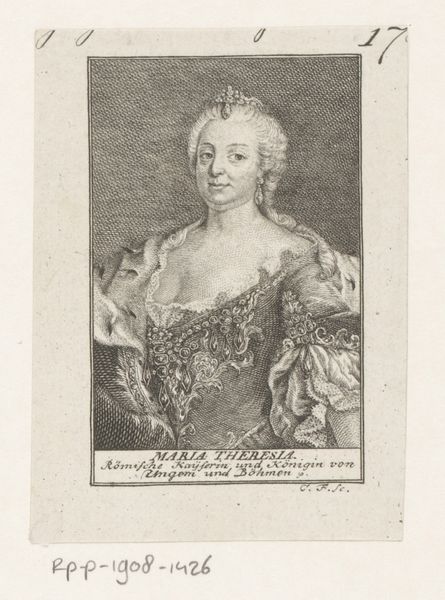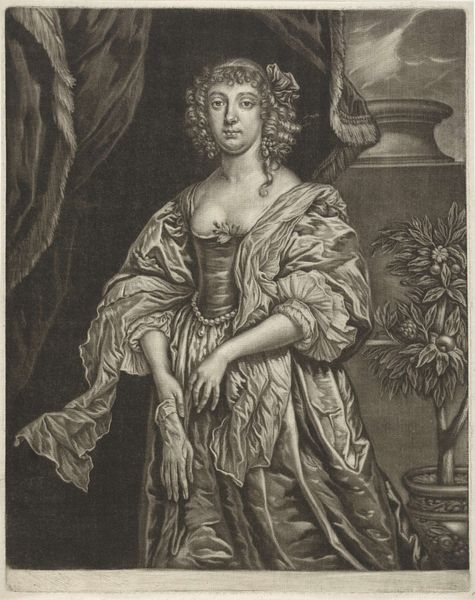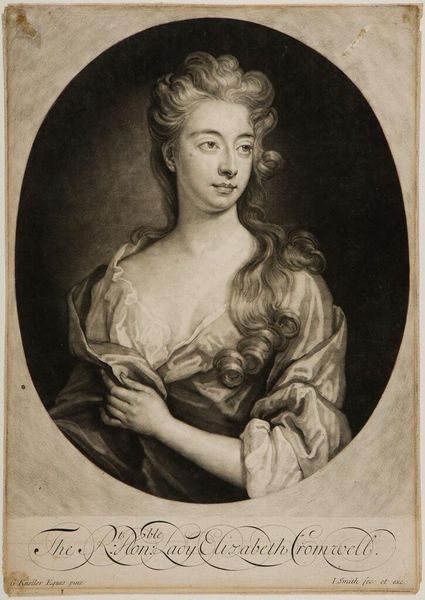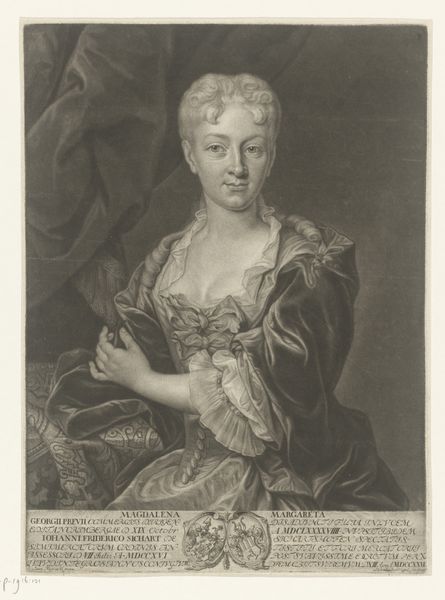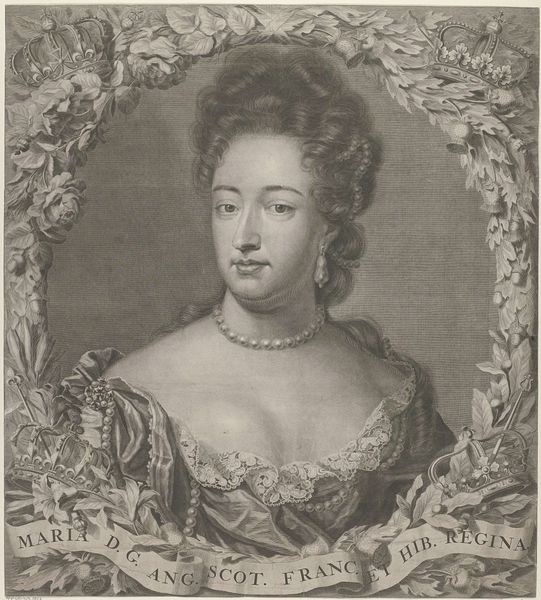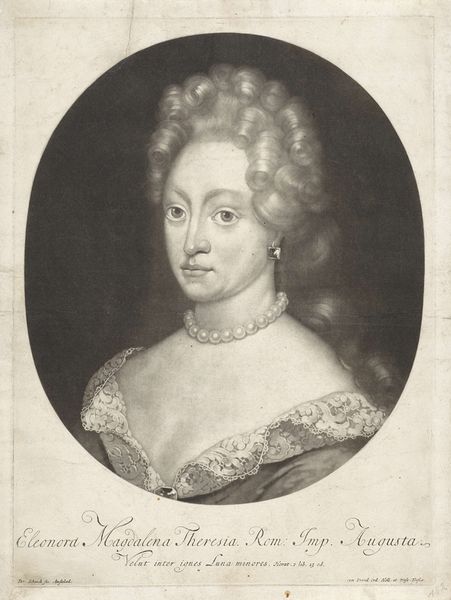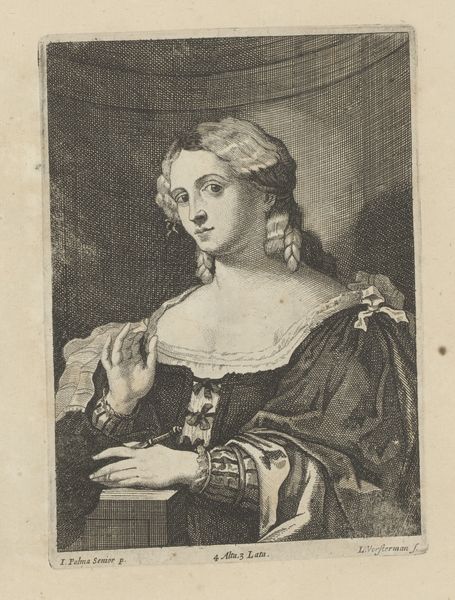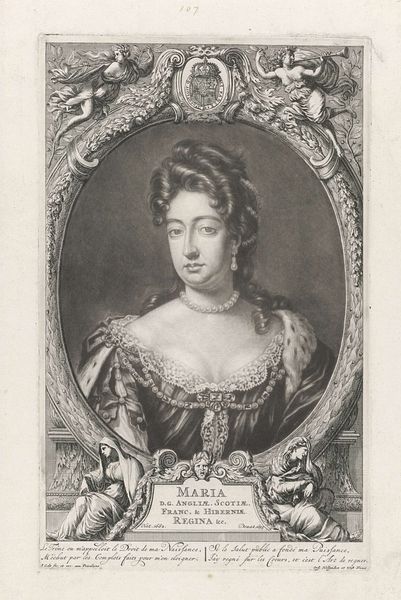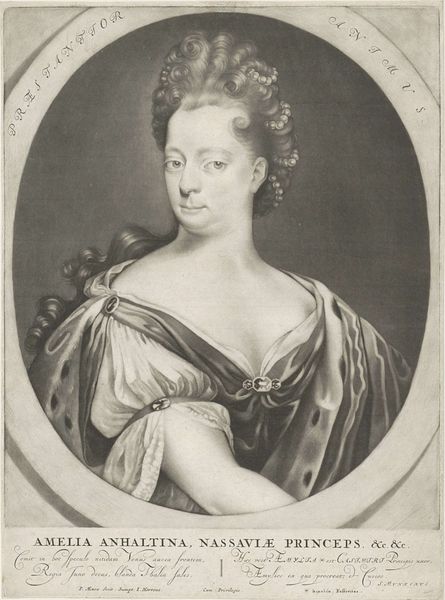
Dimensions: height 217 mm, width 164 mm
Copyright: Rijks Museum: Open Domain
Editor: Here we have Rienk Jelgerhuis's 1770 engraving, "Portret van Anna van Hannover." It has a subdued, almost somber quality despite the elaborate dress. What draws your attention to this print? Curator: As a materialist, I find myself focusing on the engraving process itself. Consider the labor involved, the repetitive action of cutting into the metal plate. It transforms an image of aristocratic privilege into a reproducible commodity. Do you think this print challenges the exclusivity of painted portraits? Editor: I see what you mean. The print makes the portrait more accessible, breaking down those barriers. Curator: Precisely. And the medium – the ink, the paper – becomes a conduit for disseminating a particular representation of power. How might the consumption of prints like this have influenced popular perceptions of royalty at the time? Was it straightforward adulation? Or did widespread distribution provoke a different kind of engagement? Editor: I hadn't thought about it that way. Perhaps seeing these images frequently normalized the royal family, but also invited scrutiny through repetition? Curator: Exactly. Furthermore, consider the social context. The rise of print culture in the 18th century democratized access to images, disrupting established hierarchies. It wasn’t simply about seeing the Queen; it was about *owning* an image of her. The means of production inherently impacted consumption and reception. Editor: So, it's less about the subject matter itself and more about the social impact of its production and distribution? That's a fascinating perspective. Curator: Indeed. We learn about art by observing how it’s crafted and received within society. It reveals deeper truths of power structures and economic realties that sometimes goes unseen within the portrait itself.
Comments
No comments
Be the first to comment and join the conversation on the ultimate creative platform.


